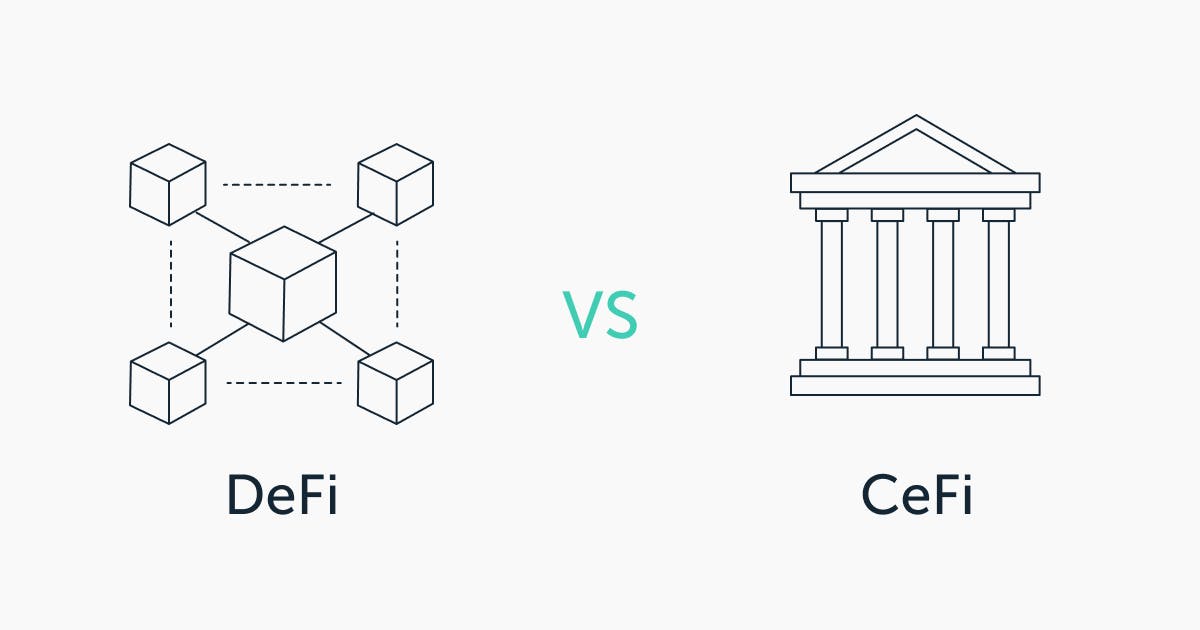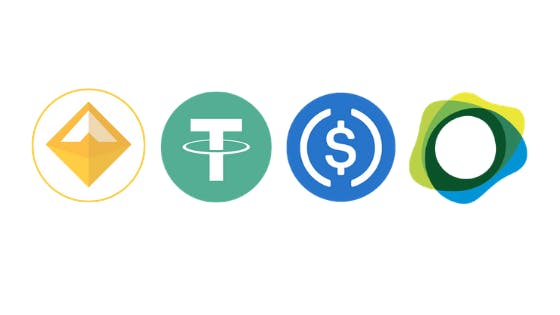What is DeFi & What does it do?
DeFi is another of those terms we hear a lot but have no idea what it means. I'll give you a quick rundown of what it is, what it can do for you, the many sorts, and so on.
Decentralized finance (DeFi) is a financial system built on distributed ledgers that uses cryptocurrencies and blockchain technology to manage transactions. DeFi aims to democratise finance by replacing old, centralised institutions with peer-to-peer networks that may offer a variety of financial services. Let’s call centralised institutions as CeFi to differentiate the two. DeFi's basic premise is to use smart contracts to automate financial productss/services, which can range from simple banking and mortgages to complex contracting and asset trading, whereas CeFi does the same thing but without the smart contracts and instead relies on people to handle funds and execute business services.

Why do people want to go from CeFi to Defi?
Financial institutions such as banks operate as guarantors in today's financial world. Having your money go through through them, gives these institutions enormous influence in what they do with your money, where it goes, how much you can transfer out per week and so on. Even though they have such influence, billions of individuals around the world still don’t have access to a bank account.
In DeFi, the financial institution is replaced by a smart contract (program) built onto the blockchain. A smart contract is a program stored on a blockchain that may hold money and transfer or repay it based on specified criteria. It does this by executing the agreement written on the code without having an intermediary involvement or present. When a smart contract is live, no one can change it thus making it secure; it will always function as planned.
An example of a smart contract is the distribution of an allowance or pocket money that might be set up to transfer money from Account A to Account B every Friday, it will only do so if Account A has the monies necessary. Because the smart contract is permanently written on the blockchain nobody can add Account C as receiver to steal funds. Smart contracts are public meaning when stored on the blockchain it can be audited and inspected it. This means bad contracts will often come under community scrutiny quickly!
Comparison between DeFi and Tradition Finance
DeFi
- You keep your money
- You have complete control over where and how your money is spent
- Money is sent in minutes
- Transaction activity is pseudonymous.
- DeFi is open to everyone
- Market is constantly open for business
- It is based on transparency: anybody can examine a product’s data and how see how the system operates
CeFi (Traditional Finance)
- Corporations hold your money
- You must trust businesses not to mismanage your funds, such as lending to high-risk customers
- Due to manual payments, payments might take a few days (If over a certain threshold, paperwork would need to be completed)
- Your financial behavior is inextricably linked to your identity
- To access financial service, you must first apply
- Employees require breaks, so markets close.
- Asking to examine their loan history, managed assets is very difficult as financial institutions are closed books.

Types of DeFi
DeFi falls into six major catergories stablecoins, exchanges, credit, derivatives, insurance and asset management. Even though DeFi is developing quickly, these catergories may or may not change in the new future. I will look in to stablecoins today and in my next upcoming blogs break down the rest.
- Stablecoins Stablecoins are important in DeFi because they remove the risk/reward equation of DeFi services from the sometimes excessive volatility of digital assets.
Stablecoins are divided into three groups in general:
Reserves for custodial or centralised stablecoins, such as USDC or Facebook's planned Diem, are held in fiat currency or high-quality liquid assets. They are not DeFi instruments because they require faith in the custodian. They are included here because they may be included into other DeFi services.
Asset-backed stablecoins construct and liquidate collateral in the form of cryptocurrencies or other assets via smart contracts.
Algorithmic stablecoins use dynamic token supply expansion and contraction to preserve the peg.

An example of a stablecoin that is pegged by the dollar is Tether. Tether or USDT was the first stablecoin pegged against the dollar to be accepted worldwide. The reason they are popular is that their '1:1 backing with the dollar' in reserve makes it the digital version of the physical dollar.
Conclusion
DeFi is an emerging new piece of tech and I and other noobs can't wait for wait it has to offer. I hope this blog has given you an introduction to what it is and the products and services it has to give. In my next blog I'll be writing a complete guide on how DeFi applications (Dapps) require DAO's to operate and also a more thorough conversation about stablecoins and its use.

